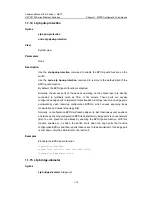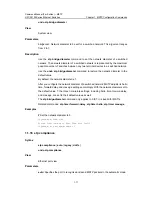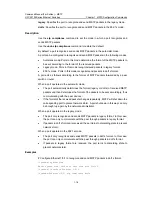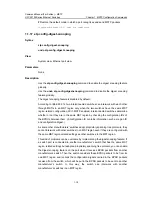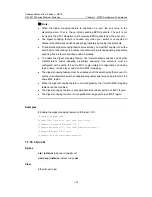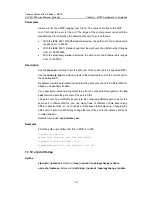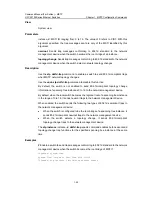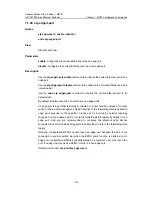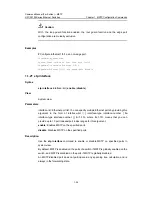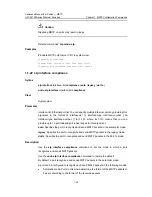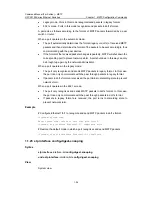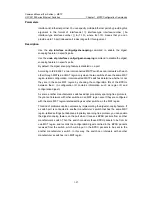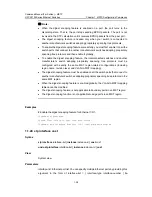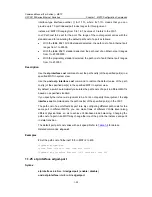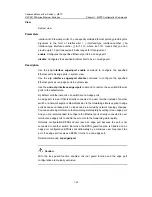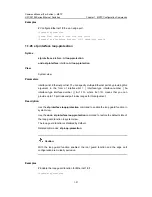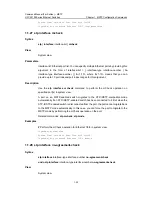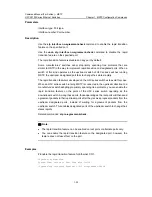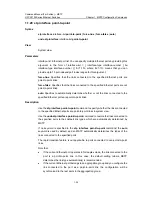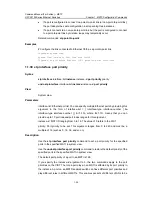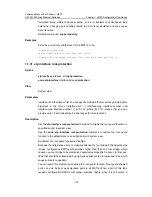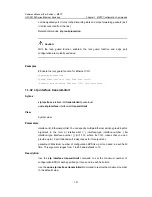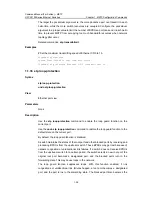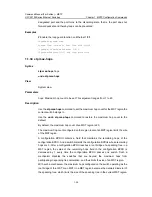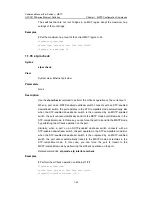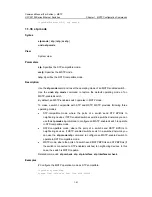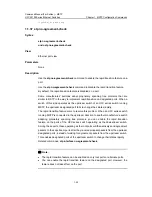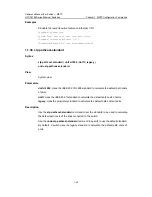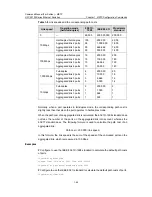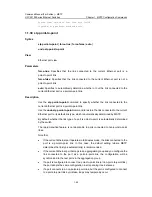
Command Manual (For Soliton) – MSTP
H3C S3100 Series Ethernet Switches
Chapter 1 MSTP Configuration Commands
1-30
View
System view
Parameters
interface-list
: Ethernet port list. You can specify multiple Ethernet ports by providing this
argument in the form of
interface-list =
{
interface-type interface-number
[
to
interface-type interface-number
] } &<1-10>, where &<1-10> means that you can
provide up to 10 port indexes/port index ranges for this argument.
enable
: Configures the specified Ethernet port to be an edge port.
disable
: Configures the specified Ethernet port to be a non-edge port.
Description
Use the
stp interface edged-port enable
command to configure the specified
Ethernet ports as edge ports in system view.
Use the
stp interface edged-port disable
command to configure the specified
Ethernet ports as non-edge ports in system view.
Use the
undo stp interface edged-port
command to restore the specified Ethernet
ports to the default state.
By default, all Ethernet ports of a switch are non-edge ports.
An edge port is a port that is directly connected to a user terminal instead of another
switch or a network segment. Rapid transition to the forwarding state is applied to edge
ports because on these ports no loops can be incurred by network topology changes.
You can enable a port to turn to the forwarding state rapidly by setting it to an edge port.
And you are recommended to configure the Ethernet ports directly connected to user
terminals as edge ports to enable them to turn to the forwarding state rapidly.
Normally, configuration BPDUs cannot reach an edge port because the port is not
connected to another switch. But when the BPDU guard function is disabled on an
edge port, configuration BPDUs sent deliberately by a malicious user may reach the
port. If an edge port receives a BPDU, it turns to a non-edge port.
Related commands:
stp edged-port
.
Caution:
With the loop guard function enabled, the root guard function and the edge port
configuration are mutually exclusive.

